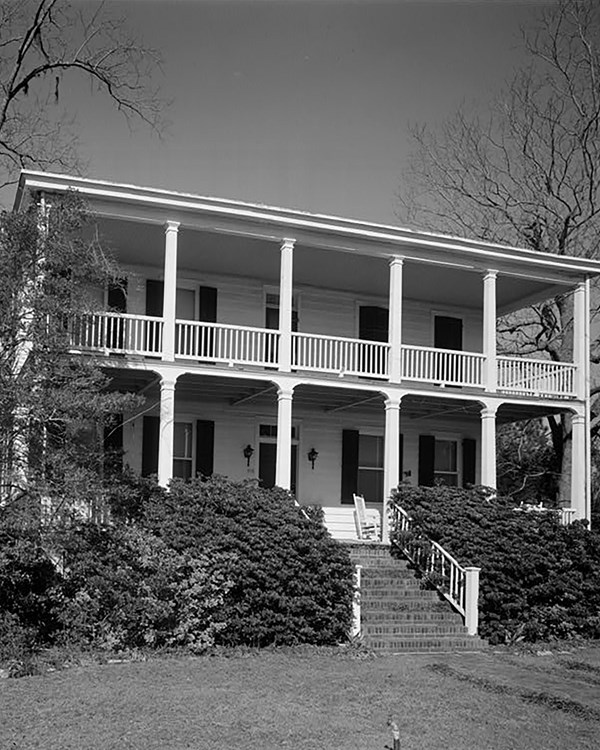Last updated: March 13, 2024
Person
Mary Bell Bythewood

Library of Congress
No memorial stands to commemorate the extraordinary character of Mary Bell Bythewood, who spent the first sixty-six years of her life enslaved. Born about 1795 near Beaufort, South Carolina, much of Mary Bell Bythewood’s life and person were controlled by the men and women who claimed her as property.1
Mary was originally enslaved by John Bythewood, a sea captain turned planter with landholdings on St. Helena’s Island and a town house in Beaufort. When Bell died in 1815, his wife Ann Black Bythewood inherited his property, including Mary. About 1823, Mary married James, also enslaved by the Bythewood family who later took their name as his surname. Together Mary and James raised nine documented children: Renty, Henry, Thomas, James, Daniel, Rebecca, Robert, Middleton, and Henry. It is a testament to their strength as parents that Mary and James kept their family together through four decades of enslavement.2
Upon Mrs. Bythewood’s death in 1846, her daughters Margaret Hingston Bell and Ann Bythewood Oswald inherited their parents’ property including Mary, James and their family. Margaret Bell’s name appears to be the source for Mary’s early usage of Bell as a surname and middle name.3
As a trusted member of the extended Bythewood-Bell-Oswald family’s enslaved population, Mary was among the thirteen men, women and children left in Beaufort on 7 November 1861 as Union forces approached the city. Fleeing in the “Great Beaufort Skedaddle”, her enslavers’ later filed a statement describing property “abandoned by him (from necessity) when he left the town of Beaufort on the approach of the public enemy.” Among “a dinner sett $40, 1 china tea sett $15, [and] table linen $52” Mary is listed as abandoned property along with her sons James, Daniel, Robert, Middleton, her daughter Rebecca and several others who may have been related to her: Silvey (age 45), Milly (age 60), Phillip (age 81), June (age 42), James (age 8) and an unnamed infant of 4 months.4
In the months following her “abandonment”, Mary Bell Bythewood took her first steps into a new world of freedom by planning and creating a life for herself and her family. In the Beaufort Tax Sales of abandoned property on 11 February 1863, Mary was the first woman to step up to make a purchase. She bought “Cassena”, the house of her enslavers’, in which she had been forced to work without dignity or personal freedom.4
Mary was issued Buyer’s Certificate #5 from the sale, paying $250 for Lot B, Block 12 on Hamilton Street between King and Federal Streets. It was half a city block located in the heart of planters’ mansions known as “The Point”. From this house Mary ensured her sons and daughter would thrive in the core of America’s first experiment with Reconstruction. Mary and James’ oldest son, Rev. Renty F. Bythewood trained as a tailor and became a leader of Beaufort’s vibrant African American community. He served as the pastor of the Tabernacle Baptist Church for 25 years, the principle of the Beaufort Colored Schools, and a trustee of the aid organization The Workers of Charity.6
In her last census, 1880, Mary was living on Hamilton Street surrounded by her children and grandchildren, each in their own home. Mary died in 1882 and the whereabouts of her grave are presently unknown.7 Her and her family’s homes memorialize the life of a woman who could not control her own life until she was a woman well into her 60s.
Despite continued injustice, and resistance to her success, when freedom came to Beaufort in November 1861, Mary marched out from under the weight of racial prejudice to create a life for herself and her family. Entirely on her own terms, she ensured that her family not only survived but thrived.
- Ancestry.com. 1870 United States Federal Census. Database with images. NARA microfilm roll M593, page 12A. Lehi, UT: Ancestry.com Operations, Inc., 2009. Images reproduced by FamilySearch.
- Freedman’s Savings and Trust Company: Beaufort, South Carolina, Registers of Signatures of Depositors in Branches of the Freedman’s Savings and Trust Company, 1865-1874. Accounts 3591, 4086, 4384, 4936, 5643. The National Archives, Washington, DC.; Record Group 101, Records of the Office of the Comptroller of the Currency, 1863-2006.
- Beaufort County Register of Deeds, 7 May 1879, Loose Deed Books, 444.
- Confederate Papers Relating to Citizens or Business Firms, 1861-65, John Bell, NARA M346, Roll 56, p 23.
- The Free South (Beaufort, SC), 17 and 30, January 1863.
- The Free South (Beaufort, SC), 30 January 1863; The Beaufort Gazette, 8 March 1918; The Beaufort Gazette, 18 June 1996; Plan of the City of Beaufort, S.C. as allotted by T.U. Tax Commissioners for the District of South Carolina, February 1863. Record Group 77, Records of the Office of the Chief of Engineers, 1789-1999, National Archives and Records Administration.
- Ancestry.com. 1870 United States Federal Census. Database with images. NARA microfilm roll T9-1221, page 27A. Lehi, UT: Ancestry.com Operations, Inc., 2009. Images reproduced by FamilySearch.
